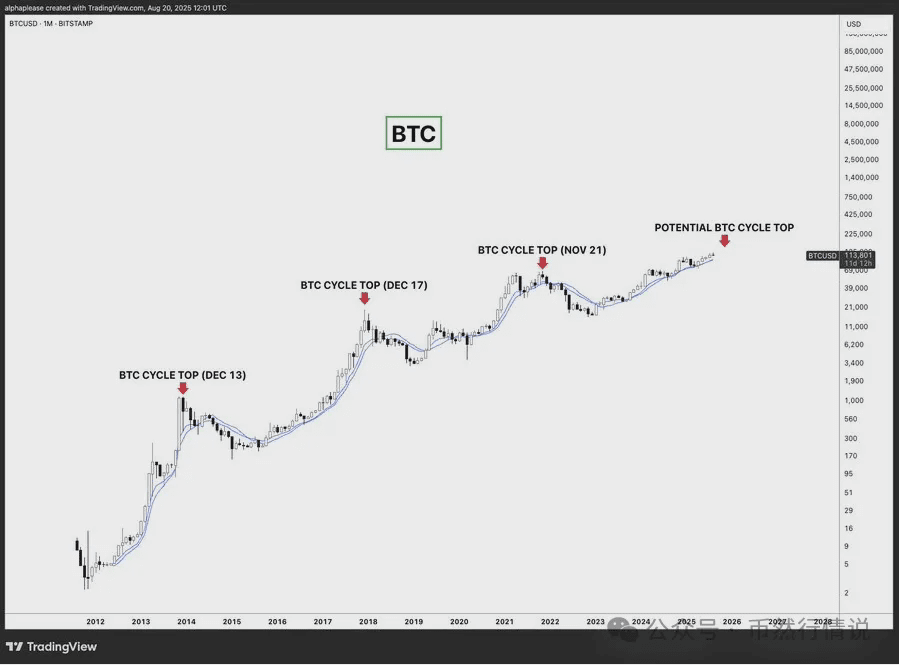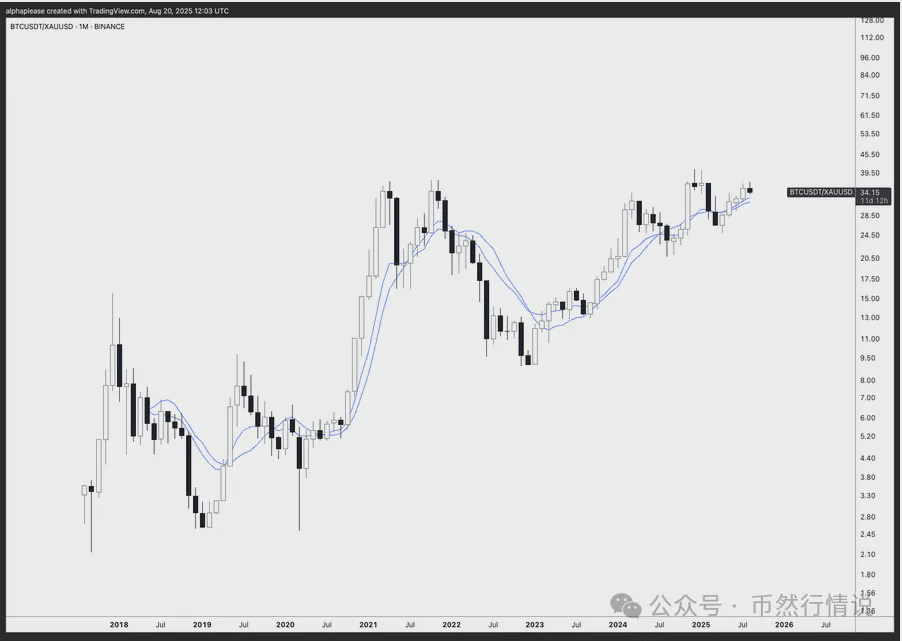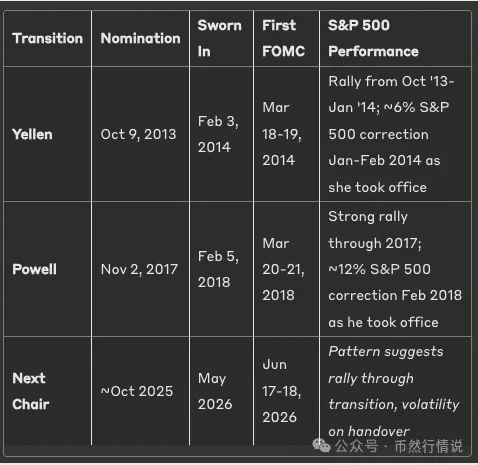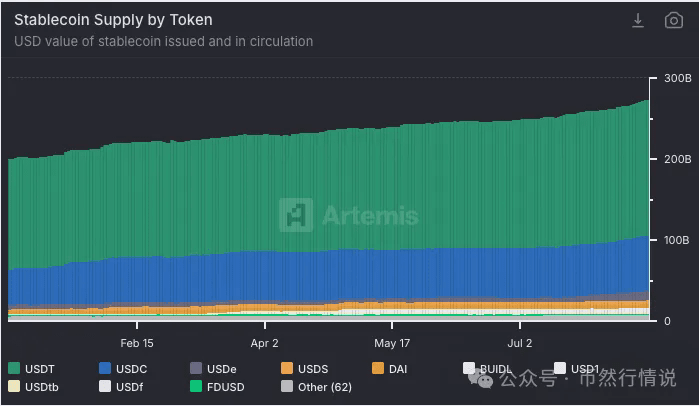In the crypto market, the 'four-year cycle' has almost become a consensus — the peaks in 2013, 2017, and 2021 were about four years apart. But this time, with institutional capital entering on a large scale, this pattern may be broken. Will the old cycle continue, or will a new rhythm begin? Let's discuss this topic from multiple dimensions.
First, let's clarify a premise: No one can accurately time the peak of the cycle.
Cycle peaks are often hidden in short-term trading charts, arriving quickly and suddenly, and by the time long-term charts show them, they have already passed. Day traders may frequently predict peaks, but most do so without the overall market context, which is of little significance. I've experienced few cycles, just sharing observations and thoughts; ultimately, decisions must rely on you — after all, the market changes rapidly, and views will adjust with new data.
Supporting the continuation of the four-year cycle: historical patterns are hard to break easily.
Looking at historical charts, the cycle peaks in December 2013, December 2017, and November 2021 are about four years apart, with an exceptionally clear pattern.

The core reasons this pattern can continue are several:
Psychological consensus is too deep: the four-year cycle has become the 'collective memory' of the crypto market, and everyone defaults to operating at this rhythm.
Self-fulfilling prophecy: The more the market believes in the cycle, the more likely it is to collectively sell at expected time points, compounded by implicit leverage (such as the potential risks of digital asset reserves), making it easier to truly hit the peak.
Halving effect correlation: Bitcoin halving causes supply shocks, historically occurring 12-18 months before peaks. Although this cycle is more 'story-driven', it still has an impact.
Simple logic is more reliable: Occam's razor principle states that a model that has succeeded three times does not need to be unnecessarily complicated.
Currently, Bitcoin has risen significantly from the bottom, clearly entering the later stages of the cycle, and according to patterns, it may be approaching the peak window.
Believing the cycle may extend to 2026: The market structure really is different now.
But here comes the question: Can a cycle dominated by institutions be the same as the previous two cycles dominated by retail? I believe the cycle exists, but it may be extended due to new factors, with core differences in these points:
1. The 'operating styles' of institutions and retail investors are completely different.
Spot ETFs bring new liquidity, making capital inflows and outflows more stable, differing from the volatility logic of retail investors 'chasing highs and cutting losses' in traditional exchanges.
Institutions are taking profits in a more 'Zen' manner, making panic selling less likely; retail investors, on the other hand, are easily influenced by emotions, leading to more dramatic cyclical fluctuations.
2. Old indicators may have 'failed'.
The tools used for analyzing cycles in the past (like NVT, MVRV) were based on the retail market; now that institutions have entered, the definition of 'overvaluation' has changed. For instance, Bitcoin has not yet surpassed its cyclical peak when priced in gold, making it hard to claim that it has reached a bubble state.

3. The regulatory environment has completely shifted.
In this cycle, both the U.S. and the SEC are more accepting of crypto, providing a clear framework for institutional entry. The previous two cycles ended due to regulatory crackdowns (such as the 2018 ICO rectification), and now this systemic risk has significantly decreased.
4. The handover of the Federal Reserve Chair may prolong the cycle.
Federal Reserve Chair Powell will step down in May 2026, with Trump expected to nominate a new chair at the end of 2025.

Historical patterns show that the market often rises after chair nominations, but adjusts when they take office — the S&P fell 6% during Yellen's handover and 12% when Powell took over. Following this trend, a nomination at the end of 2025 could extend the bull market into the transition period, with fluctuations only occurring during the handover in May-June 2026, which could coincide with the cycle peak.
5. The market's 'money bag' is more stable.
Concerns over currency depreciation have generated new demand, driven not just by traditional risk appetite.
The market capitalization of stablecoins continues to grow, equivalent to a well-stocked 'ammunition depot' for the crypto market.

The sources of Bitcoin demand have also become more diverse: ETFs, digital asset reserves, pensions, etc., are more dispersed than ever.
What could cause the four-year cycle to 'play out as usual'?
Risks of leverage in digital asset reserves: If these institutions are forced to quickly liquidate leveraged positions, it could crush buyers and change market structure. Currently, some reserves have seen significant declines in net worth after adjustments, which is concerning.
Macro 'black swan': Renewed inflation may impact the market, but the economy is currently in a 'Goldilocks state' (stable with moderate interest rates), with no signs of change.
What signals are still missing for the cycle peak?
We haven't reached the 'frenzy moment': the market remains cautious, with someone calling 'peak' every time it drops 5%. This state has persisted for 18 months, lacking a consensus bullish frenzy.
Stablecoins are still 'adding fuel': In the 3-6 months before the peak of past cycles, the supply of stablecoins would stagnate. Now that stablecoins are still on the rise, it indicates that the market's 'ammunition' has not run out.
My view: I lean towards a peak in 2026 (but it could change at any time).
The four-year cycle data is sparse (only three instances), and institutional entry has completely changed the market structure. The handover of the Federal Reserve Chair may allow the 'Goldilocks state' to continue until 2025, which is crucial for the crypto market that is highly correlated with macro factors.
The more people believe in the four-year cycle, the more different the outcomes may be — after all, the market public rarely accurately predicts trends. But I also acknowledge that the pattern may continue until it is broken.
Now that Bitcoin's dominance is declining, I will take profits from overvalued altcoins but still hold Bitcoin, believing it can reach new highs in 2026. Remember: regardless of the larger cycle, your altcoins may peak at any time.
Finally, I want to say: don't get hung up on 'selling at the peak'; it's more important to formulate a strategy.
The four-year cycle is the strongest argument for a peak in 2025, but institutional entry, the Fed's handover, and the lack of euphoric signals all suggest that the cycle may extend to 2026. Future changes are numerous, so there's no need to be too stubborn.
No one can accurately time the peak, so it's wise to develop a systematic exit strategy. Your position size should allow you to sleep well; it's perfectly fine to 'sell early' after making a profit.
Different viewpoints are welcome — writing this not only helps me make decisions but also aims to learn and grow through exchange.

